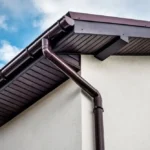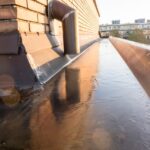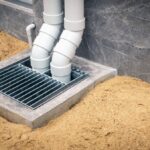The structural integrity of your home relies heavily on the condition of your roof. Among the key components of your roof, flashing plays a crucial role in preventing water leakage, which can lead to significant damage if not addressed. Learning how to fix damaged roof flashing can save you from costly repairs down the line and maintain the longevity of your roof. In this article, we’ll guide you through the processes to identify, assess, and repair roof flashing effectively.

Understanding Roof Flashing
Roof flashing is typically made from metal and is used to seal and protect the joints on a roof. Its primary function is to direct the flow of water away from areas where it might collect or seep beneath the shingles. Understanding its form and function is vital in ensuring your repair efforts are successful.
Common Causes of Damage
Before you embark on a repair task, its vital to know what causes damage to flashing. Some common causes include weather exposure, improper installation, and age-related wear. By recognizing these factors, you can better prevent future damage and ensure timely repair of existing problems.
Weather Exposure
Fluctuating temperatures, heavy snowfall, and rain can cause metal flashing to warp, crack, or even corrode. Seasonal changes expedite the deterioration of flashing, making it essential to conduct regular inspections.
Improper Installation
Poor installation is a leading reason for flashing damage. Incorrect positioning or inadequate sealing can leave gaps that allow moisture intrusion, leading to further damage.
Signs of Damaged Flashing
Visually inspecting your roof is key to determining if there is damage to the flashing. Some signs include visible rust, cracks, or even missing pieces in the flashing. Water spots on your ceilings or in your attic might also indicate flashing issues.
Inspecting Your Roof
Thorough inspection requires a safe approach. Use a sturdy ladder, like top ladder choices, to examine the roof without risking safety. Evaluate the flashing around chimneys, vents, and any other protrusions for tears, bends, or gaps.
Tools and Materials Needed
Being well-equipped will make the repair process smoother. Essential tools for repairing flashing include a pry bar, utility knife, sealant, and replacement flashing. Additionally, a wire brush for cleaning and tin snips for cutting metal are also handy.
Further Maintenance Tips
Routine checks and cleaning of your gutters can prevent the accumulation of debris that may lead to flashing damage. Learn more about cleaning techniques for gutters to aid in such maintenance.
Repairing Flashing
Once you’ve identified the damaged areas, you can proceed with the necessary repairs. Repair techniques vary from replacing a small section to a complete replacement, depending on the extent of the damage.
Sealing Small Cracks
For minor cracks, clean the area with a wire brush to remove debris or old sealant. Apply a fresh bead of roofing sealant over the crack, smoothing it out with a putty knife to ensure a tight seal.
Replacing Flashing
If your flashing is severely damaged, you’ll need to replace it. Remove the old flashing carefully using a pry bar. Ensure you’ve measured correctly before cutting new material with tin snips. Fit the new flashing in place and seal it appropriately with a quality sealant.
Preventative Measures
To prolong the lifespan of your roof and flashing, implement preventative maintenance strategies. Regular inspections and the use of high-quality materials go a long way in minimizing future issues.
Use of Quality Materials
Invest in high-quality flashing materials that withstand harsh weather conditions. Additionally, consider professional installation to ensure longevity and reliability.
For additional insights on roof protection, bad habits to avoid can accelerate the wear of your roofing system.
Periodical Checks
Conduct routine inspections annually, focusing on checking for loose or damaged flashing. This allows for early intervention before more extensive issues arise.
When to Call a Professional
Though most flashing repairs can be tackled on your own, there are scenarios when its best to call in a professional, especially when the damage is extensive or if youre unsure about the repair process.
Benefits of Professional Services
Professionals possess the expertise and tools needed for a thorough repair, minimizing the risk of further damage. Additionally, hiring a professional ensures warranties on their work, which can benefit long-term maintenance.
For more advice on prolonging roof life, consider visiting best practices for roof care and maintenance.
Conclusion
Maintaining and repairing roof flashing is a crucial element of overall roof maintenance. Understanding how to identify damage and execute repairs can extend the life of your roof, keeping your home safe and dry.

FAQs
- Q: How often should roof flashing be inspected?
A: It is recommended to inspect roof flashing at least twice a year and after major weather events to ensure its condition. - Q: Can I use any sealant for flashing repair?
A: It is best to use a sealant specifically designed for roofing to ensure durability and effectiveness. - Q: What are common signs of roof water damage?
A: Look for water stains on ceilings, moldy areas, and excess moisture in your attic, which may indicate water infiltration via damaged flashing.
This article contains affiliate links. We may earn a commission at no extra cost to you.







